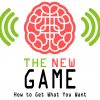Goal setting is so much a key to success that it’s cliché. We know it, but most of us don’t do it.
First, we want you to know that this is NOT just another lame goal-setting program. This is the exact process we use to exceed our goals year after year and coach thousands of clients to create BREAKTHROUGHS.
Second, regardless of how cliché it is, setting goals is VITAL if you want any chance of fulfilling your dreams with your career or your personal life.
Most people only consider their goals once per year—around New Year’s Eve. And, according to a study published by the University of Scranton people who don’t set goals are missing out because people who explicitly make resolutions are 10 times more likely to attain their goals than people who don’t explicitly make resolutions.
10 times more likely. Those are some good odds! However, your odds could be much, MUCH greater. What if you could learn what those who succeed at their goals actually DO differently than everybody else… and then DO THAT? Well, you can!
In over a decade of studying human potential and psychology, coaching and training individuals and team members, and running our own businesses—we’ve learned why most people and businesses fail at achieving their goals.
The truth is that most people don’t have the mindset for success.
They don’t have goals and they don’t make a plan, and when they do, they don’t use an effective strategy for executing their plan.
Achieving any life goal requires knowing 3 things, which we refer to as “The 3 D’s.” In order to know these 3 things, you must ask 3 questions:
- Desire: What do you really want?
- Drive: Why do you want it?
- Do: What do you need to do?
DESIRE: What do you really want?
Step 1: Brainstorm
Write down everything you can think of (big or small) that you would like to change, achieve or do. For the purpose of this activity, focus on long term goals that you want to accomplish within 1 year. Feel free to dream further into the future, just make sure you narrow down to 1 or 2 yearly goals. If you have a goal that will take longer than 1 year, identify what part of it you CAN do in 1 year and write it down. Goals can be personal, work-related, or both.
Step 2: Simplify
Look at your list and group items that are similar or that can be combined into one larger goal.
Step 3: Prioritize
Look at your simplified goals and circle the ones you feel are your highest priority. Rate each circled goal on a scale of 1 to 3, 1 being the highest priority and 3 being the least.
Step 4: Identify 1 to 2 major goals for this year
Looking at your priorities, identify 1 to 2 goals that:
- Will make the biggest impact on your life (create your BREAKTHROUGH)
- Will take about a year to implement (this cannot be something you can bang-out in 3 days or a month)
DRIVE: Why do you want it?
When making changes in our lives and working toward larger goals, there are 2 common things that lead us to stop.
- First, we get distracted with life. We get busy and encounter roadblocks
- Second, we feel uncomfortable with the new change and go back to what we know
Why do these things happen? Because we didn’t have a big enough WHY. We don’t have a strong enough drive or motive. Our ability to follow through on implementing lasting change depends on having strong enough reasons to keep us focused and committed through the hard times.
By identifying the true outcomes you’re looking for, which are usually how accomplishing the goal will impact your life or make you feel, you will have a stronger motivation because you’ll understand why you want the goal.
Look at the goals you’ve chosen for the year and ask yourself the following questions (for each goal):
- Why do you want to achieve this goal?
- What is the outcome you believe you will receive by achieving this goal?
- What does this mean to you?
- How will it feel?
- How will it impact your life?
- What will happen if you don’t achieve this goal?
DO: What do you need to do?
Now that you’ve identified where you want to be in 1 year, you can chart a course to get there.
Step 1: Monthly Milestones: The next step is to break down each major go into smaller sub-goals. This is called “chunking”. Think of your goals as the “big picture” and your sub goals or milestones as the bit-sized achievements that make your goal approachable and keep you motivated.
- Brainstorm again. For each goal, considering where you want to be in 12 months, brainstorm all of the things you need to do or have in order to reach that goal. Start by thinking about what would you need to accomplish in 9 months in order to be close to completion in 12 months? Then continue to work backwards to 6 months, and then to 3. Write down everything you can think of.
- Then, group items together, with the goal of creating 12 “milestones” or bigger steps, each of which will contain smaller tasks.
- Lastly, put the milestones in order of when they would need to be completed.
These 12 milestones will represent the 12 months of the year. Of course, you don’t know exactly how and when everything will unfold—you are making your best guess.
Creating a roadmap for your goal and putting it down on paper helps your brain be able to hold the vision of the big picture and the real-life action steps at the same time. This is vital!
Step 2: 60 Day Plan: Now it’s time to create your short-term goals. Research shows that anything that is planned more than 60 days in advanced is most likely going to change. So, take the goals you determined in the first 2 months of your milestones and break them down further into sub-goals.
- BRAINSTORM: What the tasks you will need to accomplish in the next 60 days in order to accomplish your milestones? Write down EVERYTHING you can think of.
- PRIORITIZE: Then, arrange them in order of priority and what NEEDS to be done first before moving on to the other things.
Step 3: 1-Month Plan: Take those priority items and put them in a list for month 1 and put the rest in a list for month 2, and save it for later.
- For each project goal, brainstorm ALL of the TASKS you will need to accomplish in order to reach your goals in 30 days. Write down everything you can think of.
- Prioritize each item on a scale of 1 to 4, 1 being most important OR needs to be done before you can begin on other tasks and 4 being least important or time-sensitive. You now have the next 4 weeks’ tasks (1 through 4).
DON’T STOP HERE
A small percent of the population set goals and create plans that get them to this point. If you get this far, you’re ahead of the game. However, most people who reach the point of having a plan for the month still don’t accomplish their goals. Why?
WEEKLY PLANNING IS THE #1 MOST IMPORTANT ASPECT OF PLANNING.
Why? Because THIS is where PLANNING meets ACTION. By their very nature, sub-goals in your 30, 60 or yearly plan CANNOT be action items NOW. But, you CAN take actions NOW that will keep you on your path to achieving these milestones.
If you “wait and see” if you can get to it, you won’t. Your week will unfold and you’ll be at the whim of other’s priorities, not your own. Leaving your planning off at the “work on this month” level often means you’ll get to the end of the month and find you’ve made little (if any) progress.
Step 4: 1-Week Plan:
Step 1: Determine WHERE you’re going to put your list.
Our favorite places to keep track of our weekly plan include:
- In a daily planner
- On a white board where we can see it
- In a planning or task app on our phones or computers
Just make sure it’s someplace visible and easily accessible
Step 2: Schedule a weekly strategy session.
In order to establish the habit of a weekly strategy session, you absolutely MUST SCHEDULE IT IN! Choose a time that you will sit down for 20-30 minutes EVERY WEEK to plan the coming week’s tasks. Many people make their lists first thing Monday morning. Unfortunately, it’s easy to get sidetracked by emails and other distractions on Mondays, meaning many people put off their strategy sessions. Another common time is Sunday evening, which helps eliminate this problem. However, we’ve found that Friday afternoon is the best time to plan for the coming week. Why? Because everything is fresh in your mind and come Monday morning you already know exactly what your priorities and goals are for the week and you can jump right in.
Step 3: Write Your “Ta-Da” List
WHY WE CALL IT A “TA-DA” LIST: “To-do” sounds like an unpleasant list of tasks that you have to do, while “ta-da” is more inspirational. Every time we finish a task, we cross it off and say “ta-da!” Celebrating even the little victories gives us a sense of accomplishment and builds momentum. We enjoy it so much, in fact, that if we find that we’ve completed a task that we didn’t already have on our list, we ADD IT to the list just so we can cross it off!
Take the #1 items from your Monthly Plan and write them down as Actionable Tasks. If needed, break tasks down into sub-tasks.
Identify which tasks are a priority (mark 1 through 3) and plan to do level 1 FIRST or write them down IN PRIORITY ORDER. This is your ta-da list for the week.
Schedule any tasks that are time-framed into your daily planner and assign other tasks to specific days of the week, when required. Keep the rest of your week’s list someplace easily accessible to refer to throughout the week when identifying daily goals.
Step 4: Create Your Daily Plan:
Every day, look at what you have on your SCHEDULE as well as your weekly Ta-Da list. Write in your 3 to 5 sub-goals/tasks for the day and then IGNORE EVERYTHING ELSE.







